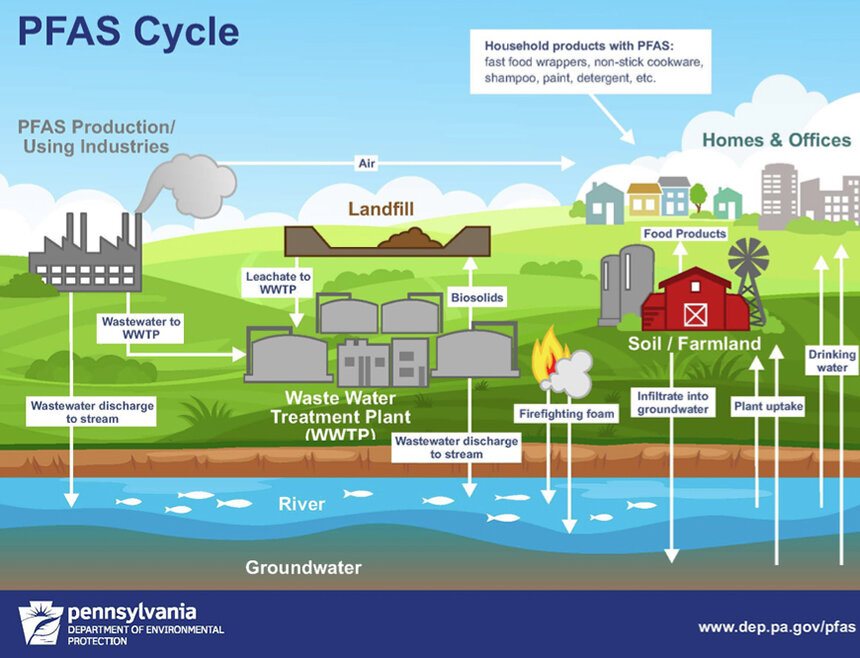Popular Massachusetts Pond Dosed with Aluminum Sulfate
June 18, 2017
HALIFAX, Mass. — For more than a decade, blue-green algae blooms in West Monponsett Pond have often ended summer fun early and rendered the boat ramp useless. Local residents are regularly cautioned about using the pond, because of harmful health effects linked to cyanobacteria. The Fire Department routinely receives calls about gas odors. The stink is inevitably traced to an abundance of algae triggered by nutrient overloading.
For the past eight years the Massachusetts Department of Public Health has been regularly testing West Monponsett Pond’s summer water quality, but the situation was recognized long before that. The problems and fixes are complicated.
A July 1987 report found increasing aquatic weed growth, nutrient pollution from septic-system leachate, siltation from solids carried in by storm drains and fecal contamination in both East and West Monponsett ponds. The ponds, part of the Taunton River watershed, are separated by Route 58, a 30-mile, south-north highway in southeastern Massachusetts.
Three decades later, the same problems — failed septic systems, stormwater runoff carrying lawn and agricultural fertilizers and animal waste, and phosphorous from bog operations — are causing water-quality impairment and leading to destructive algae blooms. The problem also has been exacerbated by increased development around both ponds during the past 30 years.
The pumping of Silver Lake and other area waterbodies to meet Brockton’s water needs is also impacting the water quality of these two ponds.
Significant levels of these pollutants continue to cause algal blooms that have closed beaches and caused fish kills. Algal blooms with results as high as 1,900,000 cells per milliliter have been discovered; a threshold of 70,000 is enough to close a beach.
Cyanobacteria advisories for West Monponsett Pond have become the norm. These outbreaks are even obvious to untrained eyes, as thick mats of algae choke the pond and color the water pea-soup green.
Since 2008 the Massachusetts Department of Public Health has issued multiple public health advisories for the pond, forcing the town to close the beaches to swimming and boating. In 2013, the Monponsett Ponds held the record of longest consecutive beach closures in state history, according to a 2016 report.
“The stagnant waters in the ponds combined with the warm water temperatures and high nutrient content make them very susceptible to cyanobacteria toxin blooms,” according to the report titled “West Monponsett Pond Nutrient Management Project.” “Cyanobacteria blooms in the pond have resulted in multiple beach closures and serious health concerns.”
Swallowing water contaminated by blue-green algae guarantees major digestive discomfort. Children can become ill, and pets can die from ingesting it. Cyanobacteria also can cause skin rashes, hives and blisters, and inhaling droplets of it can cause sore throats, sinus and ear infections.
Earlier this month, the town of Halifax hired SOLitude Lake Management to dose West Monponsett Pond with a solution of aluminum sulfate. Aluminum sulfate binds with phosphorous, one of the nutrients, along with nitrogen, that helps algae to thrive. By making the phosphorous unavailable as a nutrient, algae growth is reduced.
Local officials had long wanted to treat the stressed pond with aluminum sulfate, but the presence of an endangered mussel and dragonfly larvae delayed that route until the state Natural Heritage and Endangered Species Program approved the plan.
This month’s treatment was done to improve the pond’s water quality with the hope that it will be open for more days this spring and summer for recreational uses including boating, swimming and fishing, according to Halifax town administrator Charlie Seelig. The treatment program ended June 14.




The Halifax Board of Health takes the monitoring of septic systems very seriously; especially those around the Monponsett Ponds. For more than two decades we have making improvements.
Systems within 100 feet of the Ponds that pass a Title V inspection upon sale of a home, become “Covenant Cases” and are required to be inspected every year. As soon as that system does not pass, it is repaired/upgraded.
Systems within 100 feet of the Ponds are required to have an Innovative/Alternative system providing additional treatment to protect the groundwater. Those systems are monitored for life.
Systems within 50 feet of the Ponds are monitored though function reports as part of our Wastewater Management District.
We no longer have beach closures due to the presence of E. coli from septic systems, as was the case many years ago.
On another note, the stagnation of the Monponsett Ponds created by the Stump Brook Dam so that the City of Brockton can use the Monponsett Ponds as Tributaries to the Surface Water Supply of Silver Lake in Kingston is a huge detrimental causative factor of the cyanobacteria blooms that was not mentioned in this article. I hope you will follow-up with more information on this important environmental issue and the complex political and people-caused factors creating it. We have a serious water quantity and water quality problem requiring serious and diligent attention.
Cathy Drinan, Halifax Health Agent
Cathleen, good point about Brockton water use impacting the ponds. I just added some information regarding that issue and a link to a story we published about it. — Frank Carini, ecoRI News editor
Thank you, Frank!